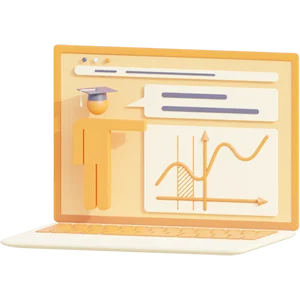BGZ2026 Lab training: Assignment for Paracetamol and Powerpoint for beaker glass experiment
This document contains the assignment for the paracetamol study and the powerpoint and notes (text used during the presentation) for beaker glass experiment: all the documents for the 2 lab trainings you need!
Preview document (1 van de 20 pagina's)
Voordelen van Knoowy
€ 5,99
 Niet tevreden? Geld terug
Niet tevreden? Geld terug
 Document direct te downloaden
Document direct te downloaden
 € 0,50 korting bij betalen met saldo
€ 0,50 korting bij betalen met saldo
-
 Ontvang gratis oefenvragen bij document
Ontvang gratis oefenvragen bij document

Specificaties
- School: Maastricht University
- Opleiding: Gezondheidswetenschappen
- Vaknaam: BGZ2026 The Basic Principles of Pharmacology
- Alle documenten voor dit vak ›
Document
- Rubriek: Overige documenten
- Bijgewerkt op: 01-11-2023
- Gemaakt op: 26-01-2021
- Type: .pdf
- Pagina's: 20
- Taal: Nederlands
Tags
Verkoper
Ik ben afgestudeerd aan de opleiding Gezondheidswetenschappen aan Maastricht University en volgde de richting Biologie en Gezondheid. Op mijn profiel kun je alle documenten, voor een lage prijs, vinden die je nodig hebt om je studie zo goed mogelijk af te ronden. Er staan uitwerkingen van taken, voorbereidingen voor bijeenkomsten, presentaties, verslagen en oefenvragen op mijn profiel. Tevens heb ik bundels van de verschillende blokken en van het volledige 1e, 2e en 3e jaar gemaakt (inclusief of exclusief FiA documenten). Kijk gerust rond op mijn profiel of er documenten voor je bij zitten en mocht je vragen hebben (algemeen, over de opleiding of over de documenten zelf), kun je mij altijd een berichtje sturen! :)
Beschikbaar in bundel
Vakken van Gezondheidswetenschappen - Maastricht University
Meer Gezondheidswetenschappen ›aging and health anxiety disorders bedreigingen van gezondheid bgz2021 leven in evenwicht bgz2022 de continuïteit van het leven bgz2023 aanval en verdediging bgz2024 food for life bgz2025 use it or lose it bgz2026 the basic principles of pharmacology een leven lang gezond een leven lang gezond gzw1021 fia 2.2: wetenschap in de maatschappij gzw1021 een leven lang gezond gzw1022 bedreigingen van gezondheid gzw1023 introductie wetenschappelijke onderzoeksmethoden gzw1024 gezondheid, voeding en bewegen gzw1025 zorgen voor gezondheid gzw1026 introduction to statistical methods for data analysis gzw1242 gezondheid als norm (blok 5) gzw1242 gezondheid als norm (gzw1021 een leven lang gezond) gzw2225 phia 2.5 sapere aude gzw3224 introductie wetenschappelijke onderzoeksmethoden introductie wetenschappelijke onderzoeksmethoden - gzw1023 voortgezette statistiek en methoden van onderzoek
Al meer dan 146.000 tevreden studenten
-
Vien
Goed website! Staat heel veel extra's op in vergelijking met soortgelijke sites.
-
Gisela
Aanrader! Altijd een keer proberen want dit is het nieuwe smart studeren😎
-
Pinjeu
Maak het jezelf een beetje makkelijker. Knoowy is snel en effectief. Zeer gebruiksvriendelijk.
-
chayennefisscher
Heel fijn dat deze website je studieloopbaan een beetje verlicht!
-
susanne
Prima platform voor iedere student.
-
alexanderzwetsloot
Ik gebruik graag samenvattingen en oefenexamens om me extra goed voor te bereiden op examens.
-
anonymous
Een echte aanrader voor studenten. Knoowy is heel gemakkelijk te gebruiken.
-
Oebele
Makkelijk en zonder gedoe! Veel aanbod door veel verschillende aanbieders. Het sluit allemaal goed aan op de lesmethodes!
 Actie: ontvang 10% korting bij aankoop van 3 of meer items!
Actie: ontvang 10% korting bij aankoop van 3 of meer items!
Actie: ontvang 10% korting bij aankoop van 3 of meer items!







